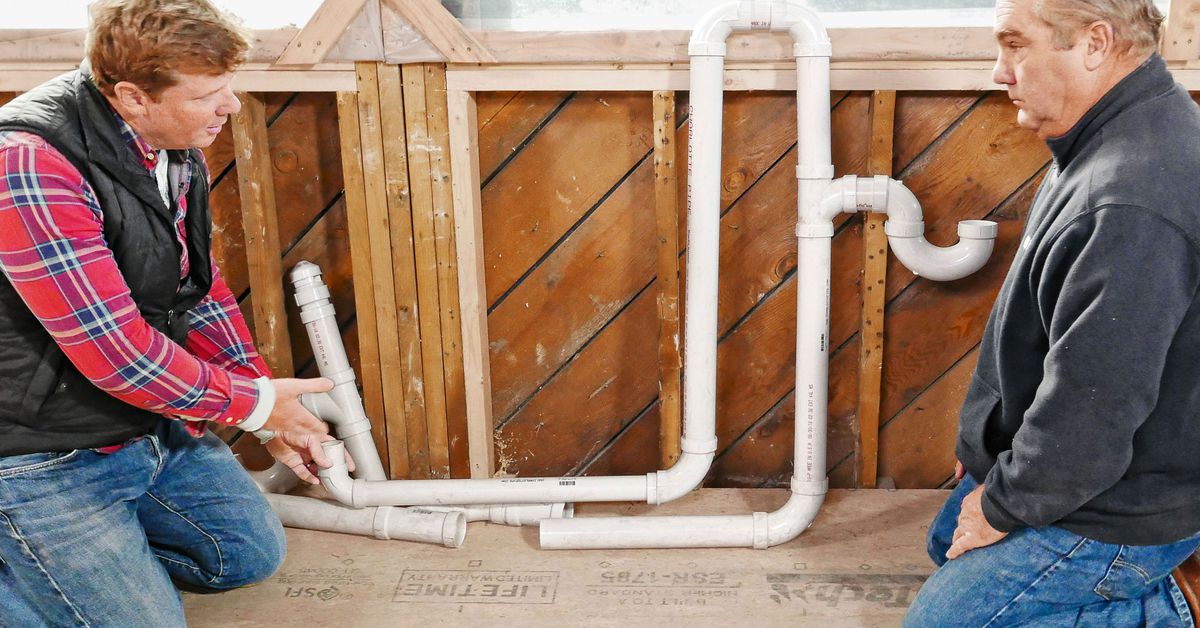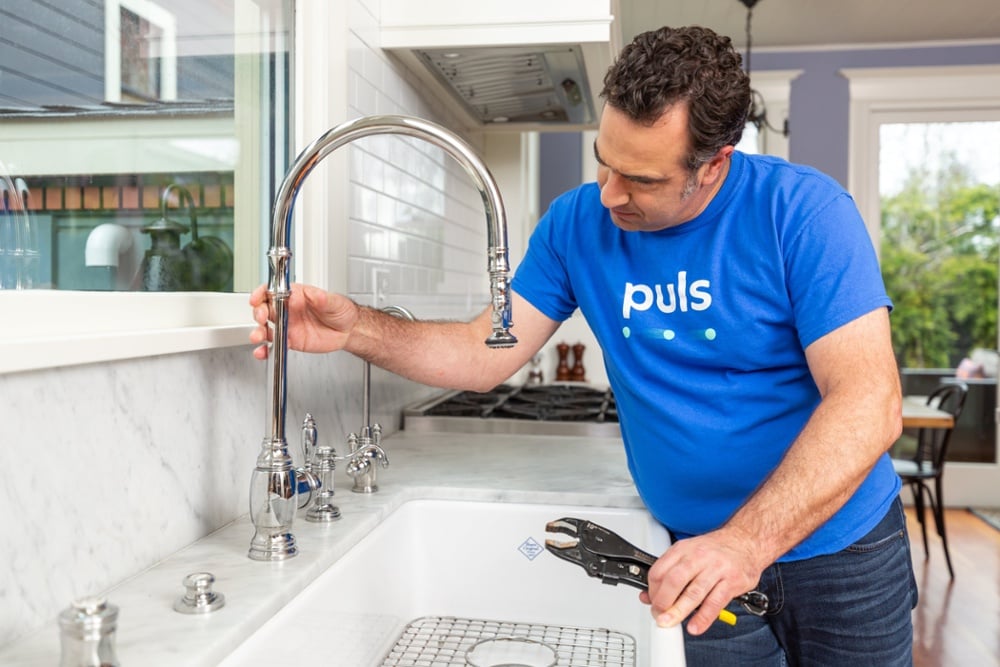Why is My House Making Unusual Plumbing Noises?
Why is My House Making Unusual Plumbing Noises?
Blog Article
How do you really feel when it comes to Why Do My Plumbing Pipes Make A Knocking Noise?

To identify noisy plumbing, it is very important to establish initial whether the unwanted noises happen on the system's inlet side-in various other words, when water is turned on-or on the drain side. Sounds on the inlet side have actually differed causes: extreme water stress, worn valve as well as tap components, improperly connected pumps or other appliances, incorrectly placed pipe fasteners, as well as plumbing runs consisting of way too many limited bends or various other constraints. Sounds on the drainpipe side generally come from poor location or, as with some inlet side sound, a layout containing tight bends.
Hissing
Hissing noise that occurs when a tap is opened a little usually signals excessive water pressure. Consult your local water company if you think this issue; it will be able to inform you the water stress in your location and also can mount a pressurereducing shutoff on the inbound supply of water pipe if required.
Various Other Inlet Side Noises
Squeaking, squealing, damaging, breaking, and also touching normally are brought on by the development or tightening of pipelines, normally copper ones providing warm water. The noises happen as the pipes slide against loose fasteners or strike nearby house framing. You can often determine the area of the problem if the pipes are exposed; simply adhere to the audio when the pipelines are making noise. Probably you will discover a loosened pipeline wall mount or an area where pipes lie so near flooring joists or various other framing pieces that they clatter against them. Affixing foam pipeline insulation around the pipelines at the point of contact should fix the problem. Make certain bands as well as hangers are secure and also give appropriate support. Where possible, pipeline bolts ought to be attached to massive architectural elements such as foundation wall surfaces rather than to framing; doing so decreases the transmission of resonances from plumbing to surfaces that can intensify and move them. If connecting fasteners to framework is inevitable, wrap pipelines with insulation or various other resilient product where they get in touch with fasteners, and also sandwich the ends of new bolts between rubber washers when mounting them.
Fixing plumbing runs that suffer from flow-restricting limited or various bends is a last resort that should be embarked on just after seeking advice from a competent plumbing contractor. However, this situation is rather common in older residences that may not have actually been built with interior plumbing or that have seen numerous remodels, especially by beginners.
Chattering or Shrilling
Intense chattering or shrilling that occurs when a shutoff or faucet is switched on, and that usually goes away when the installation is opened fully, signals loose or malfunctioning interior components. The solution is to change the valve or faucet with a brand-new one.
Pumps and also appliances such as cleaning devices and also dishwashing machines can move motor sound to pipes if they are poorly linked. Connect such products to plumbing with plastic or rubber hoses-never inflexible pipe-to isolate them.
Drainpipe Sound
On the drainpipe side of plumbing, the chief objectives are to remove surfaces that can be struck by dropping or rushing water and also to insulate pipelines to contain inevitable sounds.
In brand-new building and construction, tubs, shower stalls, toilets, and wallmounted sinks as well as basins ought to be set on or versus resilient underlayments to minimize the transmission of audio with them. Water-saving toilets as well as faucets are much less noisy than traditional versions; install them rather than older kinds even if codes in your area still permit utilizing older components.
Drainpipes that do not run up and down to the cellar or that branch into horizontal pipeline runs sustained at floor joists or other mounting existing particularly bothersome sound troubles. Such pipes are huge enough to radiate significant resonance; they also carry considerable quantities of water, that makes the situation worse. In new building and construction, define cast-iron soil pipes (the big pipelines that drain pipes toilets) if you can afford them. Their massiveness consists of a lot of the noise made by water going through them. Additionally, prevent transmitting drainpipes in walls shown to bedrooms and spaces where individuals gather. Walls containing drainpipes must be soundproofed as was defined earlier, utilizing dual panels of sound-insulating fiber board and wallboard. Pipes themselves can be wrapped with unique fiberglass insulation created the purpose; such pipes have an impervious vinyl skin (sometimes including lead). Results are not constantly sufficient.
Thudding
Thudding sound, often accompanied by shuddering pipes, when a faucet or home appliance shutoff is switched off is a problem called water hammer. The noise and vibration are triggered by the reverberating wave of stress in the water, which unexpectedly has no area to go. Occasionally opening up a valve that discharges water promptly right into a section of piping consisting of a limitation, arm joint, or tee fitting can produce the same condition.
Water hammer can typically be treated by setting up fittings called air chambers or shock absorbers in the plumbing to which the problem valves or faucets are connected. These devices allow the shock wave created by the halted flow of water to dissipate in the air they contain, which (unlike water) is compressible.
Older plumbing systems may have brief upright areas of capped pipe behind wall surfaces on tap runs for the same purpose; these can eventually fill with water, lowering or damaging their performance. The treatment is to drain pipes the water system entirely by shutting down the major water system valve and opening all taps. After that open up the primary supply valve and shut the taps one at a time, beginning with the tap nearest the valve and also finishing with the one farthest away.
If Your Plumbing is Making These Sounds, There’s a Problem
A Bang or Thump When You Turn Off a Faucet
If a loud bang or thump greets you each time your turn off running water, you likely have a water hammer. A water hammer occurs when the water velocity is brought to a halt, sending a shock wave through the pipe. It can be pretty jarring — even worse, damaging to your plumbing system. All that thudding could loosen connections.
Strange Toilet Noises
You’re so familiar with the sounds your toilet makes that your ears will be attuned to anything out of the ordinary. Fortunately, most unusual toilet noises can be narrowed down to just one of several problems.
Foghorn sound:
Open the toilet tank Flush the toilet When you hear the foghorn noise, lift the float to the top of the tank If you’re ambitious, you can remove the ballcock valve and disassemble it to replace the washer. Or you can more easily replace the ballcock valve entirely. This device is relatively inexpensive and available at most any hardware store.
Persistent hissing:
The hissing following a flush is the sound of the tank filling. It should stop once the tank is full. But if the hissing continues, it’s likely because water is leaking out of the tank. The rubber flap at the bottom of the tank can degrade, letting water slip through and into the bowl. That’s why the tank is refilling continuously. Fortunately, this is an easy fix:
Cut the water to the toilet by closing the shutoff valve on the water supply line. Flush the toilet to drain the tank. Disconnect the flapper Attach the new flapper Gurgling or bubbling:
Gurgling or bubbling suggests negative air pressure in the drain line, likely resulting from a clog. As air releases, it causes the water in the toilet to bubble. This could either be a minor issue or a major one, depending on the clog’s severity. Clogs can be caused by toilet paper or more stubborn obstructions such as tree roots. If you can’t work out the clog with a plunger, contact a professional plumber for assistance because a clog of this magnitude could lead to filthy and unsanitary sewage backups in your sink bathtub.

I was shown that report about Why Do My Pipes Make Noises from a good friend on our other web property. Feel free to take the time to distribute this page if you liked it. Thank you for your time spent reading it.
Schedule A Service Report this page